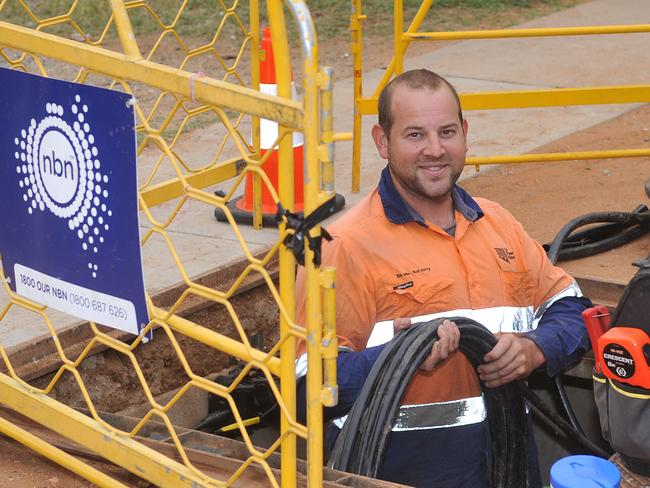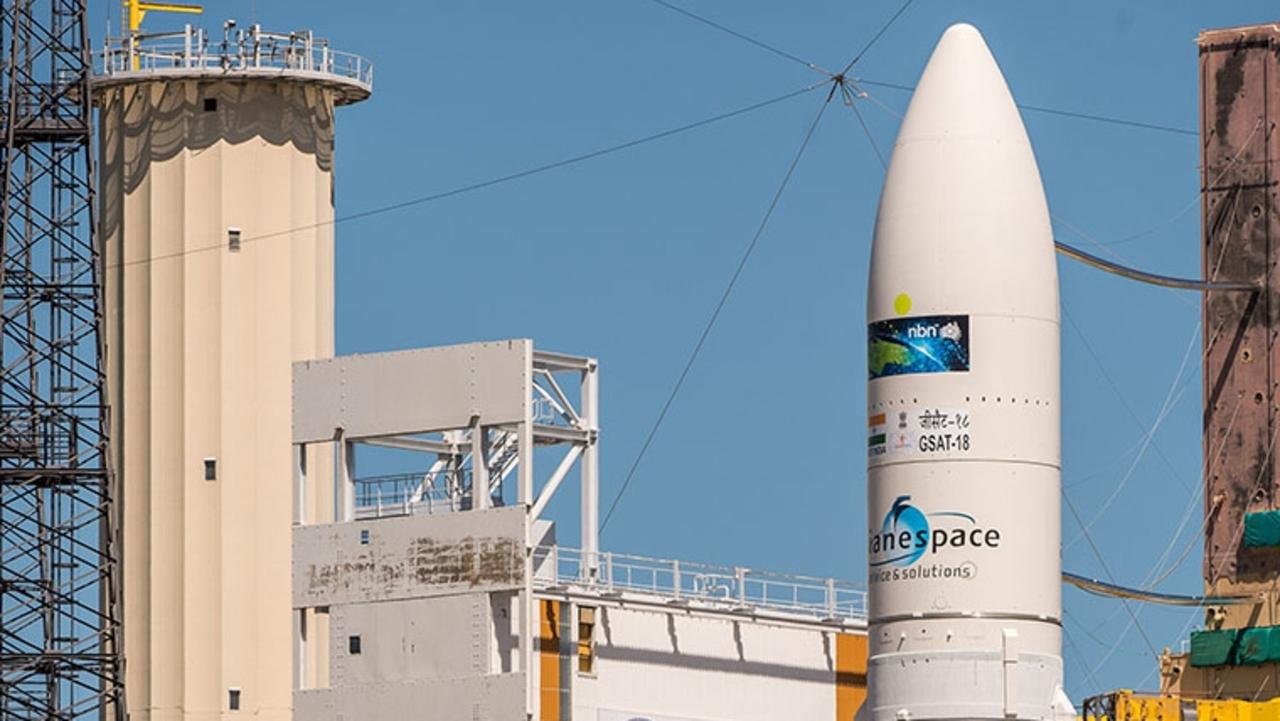Shorten reaffirms commitment to fibre, promising FTTP for two million more homes and businesses
IF YOU were excited to hear that Labor plans to return to super-fast broadband technology if it wins government — don’t get ahead of yourself just yet.
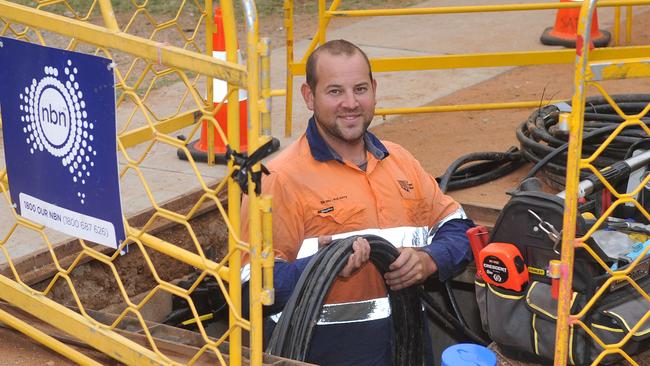
IF YOU were excited to hear that Labor plans to return to super-fast broadband technology if it wins government — don’t get ahead of yourself just yet.
While the party has announced it wants to revive the expensive but best-practice fibre-to-the-premises model, it has made it clear that the technology will only be applied to a fraction of the population.
Labor’s National Broadband Network policy pledges to connect two million additional homes and businesses via fibre to the premises (FTTP) — but this will mostly be confined to country areas.
City-dwellers are likely to be stuck with the Coalition’s cheaper mixed-technology model, which relies on the inferior copper network to make the final connection to the home.
The Coalition’s fibre-to-the-node plan provides speeds of between 25 to 100 megabits per second while Labor’s FTTP provides far superior speeds of 1 gigabit per second.
WHO ARE THE BIG WINNERS UNDER LABOR’S NBN?
Labor’s NBN would double the number of homes and businesses connected to high-speed fibre, compared to the Coalition’s plan.
“The real winners are all those people who were left behind when Malcolm Turnbull came to government,” a spokesman for Labor communication spokesman Jason Clare told news.com.au.
He said those still waiting for the NBN in their area who were not covered by an existing contract would receive high-speed fibre under Labor.
While stressing the incredibly complex web that is the NBN, the spokesman said “towns in every state and territory” would be connected to a superior network.
“It’s an incredibly complex network … but off the top of my head towns including Lismore, Grafton, Byron Bay, Kingscliff, Jindabyne, Batemans Bay will receive fibre to the premises,” he said.
“There are 12 million homes and business around Australia … and two million more of those will be connected with fibre under Labor.”
Tasmania’s west coast would also be a big winner under a Labor government with Jason Clare previously promising to fund fibre optic cable connections to residents in Queenstown, Rosebery and Zeehan after a bitter backlash to the Coalition’s plan to service the region via satellite.
Labor won’t touch existing satellites or fixed wireless technology, which account for about 7 per cent of the rollout, and also will honour contracts using the hybrid fibre coaxial network (HFC) network, which is the technology pay TV relies on and doesn’t provide the speeds of pure fibre.
The HFC network primarily exists in Sydney, Melbourne and Brisbane and thus a majority of those who will benefit under Labor’s NBN will come from outside the major cities.
“Many of these (two million) premises are in outer suburban parts of Australia, but also in regional Australia as well,” Mr Clare told reporters.
The main benefactors of Labor’s policy “are regional Australia and outer suburban suburbs including more than 11,000 premises here in the electorate of Lindsay,” he said.
But it’s tough luck for those in areas already connected to the NBN, or where planning has already begun.
For those already connected to the FTTN NBN, they will have to wait and see what plan Infrastructure Australia comes up with to allow customers to swap over.
That won’t take place until after the rollout completion date of June 2022. Any costs from switching over fibre-to-the-node connections won’t be included in the $57 billion allocated for the project.
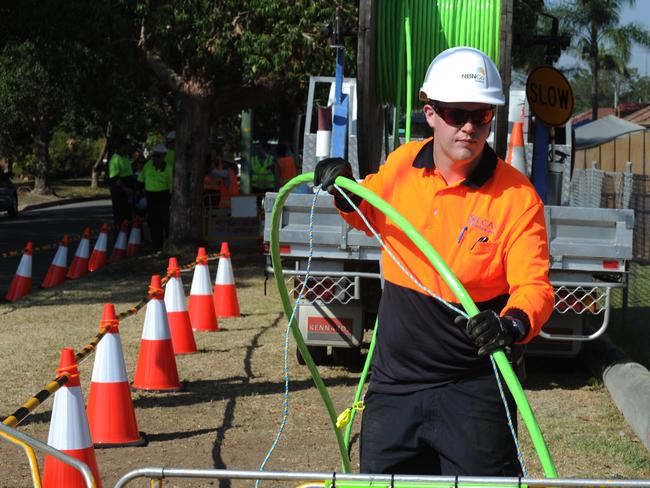
LABOR PROMISES SAME COST, SAME COMPLETION DATE
Labor insists the announcement will cost as much as the Liberals’ plan — capped at $57 billion — and that the initial rollout will be completed in the same time frame.
Under Labor, construction of Prime Minister Malcolm Turnbull’s fibre-to-the-node network would cease when the existing pipeline of work wrapped up.
Within the first term of a Shorten government, Infrastructure Australia would be commissioned to investigate how those already connected to Mr Turnbull’s NBN could be moved over to fibre-to-the-premises.
Labor will honour supply agreements and not revert entirely to its initial policy, in which more than 90 per cent of Australians would have been connected by fibre-to-the-premises (FTTP). Instead, about 39 per cent would be connected via FTTP (compared to the Coalition’s 20 per cent) with many metropolitan residents remaining on the HFC network.
“Under Labor, the rollout of HFC will continue, recognising the contracts in place, the substantial capital expenditure already sunk, and the constraints placed on future governments by Mr Turnbull in the revised Definitive Agreements,” a policy document released Monday reads.
“The rollout of Labor’s fixed wireless and satellite networks, and fibre-to-the-basement, will also continue.”
Labor’s $57 billion funding cap will take priority and determine the number of additional homes and businesses to get fibre-to-the premises in the initial rollout.
HOW DIFFICULT IS IT FOR NBN CO TO SWITCH TECHNOLOGIES?
Rod Tucker from the University of Melbourne believes it would be little trouble for NBN Co to switch back to a fibre-to-the-premises model.
“There is still the design and technical expertise within the company for carrying out fibre-to-the-premises installations,” he said. “There are plenty of those people around still … I don’t think it would be that much of a disruption.”
Mr Tucker said the extra two million FTTP connections amounted to about a 25 per cent increase and the change in policy wouldn’t result in a dramatic slowdown of the rollout.
“It’s not difficult to imagine that Labor could achieve its objective (by June 2020),” he said.
Mr Tucker also pointed to Labor’s commitment to honour all existing contracts as a way to ensure a smooth transition.
“For instance, where I’m living, I know the design stages are under way for my particular town. There’s been no work done yet but I guess under this plan obviously there’s a contract in place and that will continue with fibre to the node.”
As Bill shorten told reporters Monday: “We cannot pretend the last three years didn’t happen. (Labor) is not going to go back and unpick everything the previous government has done.”
You can check the status of the rollout in your area here.
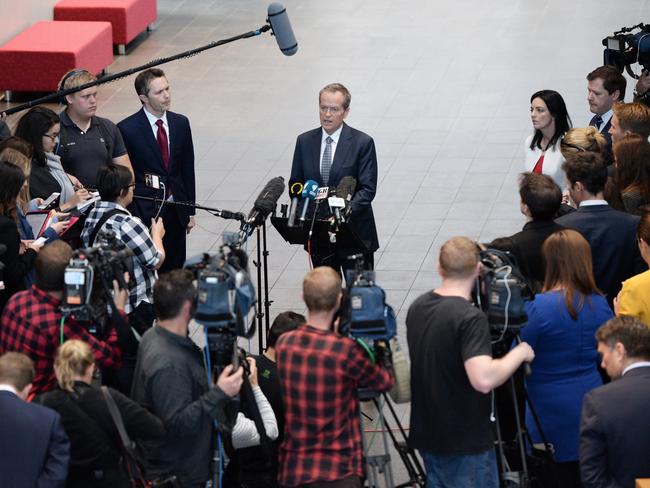
NBN Co chief executive Bill Morrow told Crikey in March that the company would not be caught with its pants down should Labor return to the more expensive policy.
Labor also alluded to how it would seek to incorporate new technologies such as skinny fibre and fibre to the distribution point (FTTdP), which allow fibre to be run closer to homes more cheaply.
The party said it would “further explore the potential of this (FTTdP) technology in government”.
The FTTdP strategy requires small distribution point unit devices to be installed in pits in streets outside homes. The units then provide the optical to electrical conversion between the fibre and existing copper just outside the home, however NBN Co doesn’t think the technology will be commercially viable until the end of next year.
Mr Morrow has consistently said the taxpayer funded company is agile, pointing to the recent trialling of FTTdP technology as evidence of that.
MALCOLM TURNBULL HITS BACK
Mr Turnbull has described the Opposition’s NBN policy announcement as “another example of Shortenomics”.
He explained the zinger-like term as “distinguished by being very short on economics”.
Speaking to reporters today, the PM cast doubt over Labor’s claim it could deliver its version of the NBN for the same price and in the same time frame.
“They say they’re going to extend more fibre to the premises, and it’s not going to cost any more. It’s an oldie but a not-so-goodie,” he said.
“The truth is that Labor completely mismanaged and bungled the NBN. It was a hopelessly failed project until we took over.”
Mr Turnbull tried to shut down Mr Shorten’s claim that the government had failed to deliver on its pre-election promises. He said the NBN Co hadn’t just met, but beaten all its targets.
“In the last month, the NBN connected more premises than Labor did in six years,” he said.
